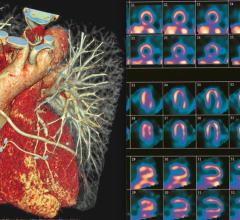
June 13, 2018 — The thought of losing up to $14 a week along with personalized goal setting may have motivated ischemic heart disease patients to increase their exercise, according to a new clinical trial published in Journal of the American Heart Association, the Open Access Journal of the American Heart Association/American Stroke Association.
Ischemic heart disease is the leading cause of death in the United States. Yet, while regular exercise has been shown to reduce the risk of cardiovascular events and risk of death by up to 30 percent among these patients, most don’t participate in exercise-based rehabilitation programs or obtain enough physical activity on their own.
“There is a lot of interest in using wearable devices to increase activity levels among high-risk cardiovascular patients, but the best way to design these types of programs is unknown,” said Neel Chokshi, M.D., M.BA., first author and cardiologist at the Perelman School of Medicine and medical director of the Sports Cardiology and Fitness Program at Penn Medicine both located in Philadelphia. “Our trial is one of the first to test the use of mobile technology through a home-based program and found that while wearable devices alone were not effective, combining them with financial incentives and personalized goal-setting significantly increased physical activity levels during the six-month period.”
Researchers obtained baseline step counts and tracked 105 ischemic heart disease patients (average age 60; 70 percent men) for 24-weeks to see if financial incentives and personalized goal setting would increase physical activity. Patients in the incentive group received a wrist-worn activity tracking device, personalized step goals, daily feedback and were allocated $14 each week to a virtual account for the first 16 weeks – $2 of which could be lost per day for not achieving step goals. They also selected whether to receive personalized goal-setting communications by text, email, interactive voice recording or a combination.
Patients in the control group received a wearable device that counted steps but no incentives or feedback.
Researchers found:
- Patients in the incentive group significantly increased their physical activity levels — 1,368 more steps per day during the main intervention period — compared to the control group;
- After financial incentives were stopped in the follow-up period, the incentive group still increased their physical activity by 1,154 steps per day compared to the control group; and
- Patients in the control group had no significant change in their physical activity levels.
“This is one of the first clinical trials that used financial incentives and found increases in physical activity were sustained even after incentives stopped, a potential sign of habit formation,” said Mitesh Patel, M.D., senior author and assistant professor at the Perelman School of Medicine at the University of Pennsylvania and director of the Penn Medicine Nudge Unit, both located in Philadelphia. “A key element of our study was that incentives were designed to leverage the behavioral economic principle of loss aversion, which finds that for the same reward size, most people are more motivated when they are told they might lose a reward than when told they could earn a reward.”
Other co-authors are Srinath Adusumalli, M.D.; Dylan S. Small, Ph.D.; Alexander Morris, B.S.; Jordyn Feingold, MAPP; Yoonhee P. Ha, M.Sc., M.Phil.; Marta D. Lynch, B.S.; Charles A. L. Rareshide, M.S.; and Victoria Hilbert, M.P.H., R.D. Author disclosures are in the manuscript.
The trial was funded by the National Center for Advancing Translational Science, the Institute for Translational Medicine and Therapeutics at the University of Pennsylvania, and the University of Pennsylvania Health System through the Penn Medicine Nudge Unit. These funding sources had no role in the design and conduct of the study.
For more information: www.jaha.ahajournals.org
Reference


 January 23, 2024
January 23, 2024 








